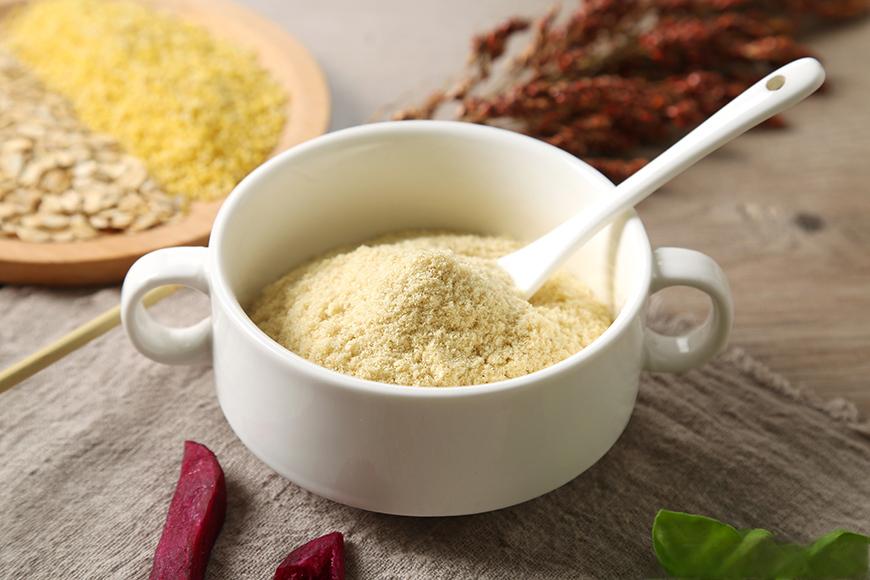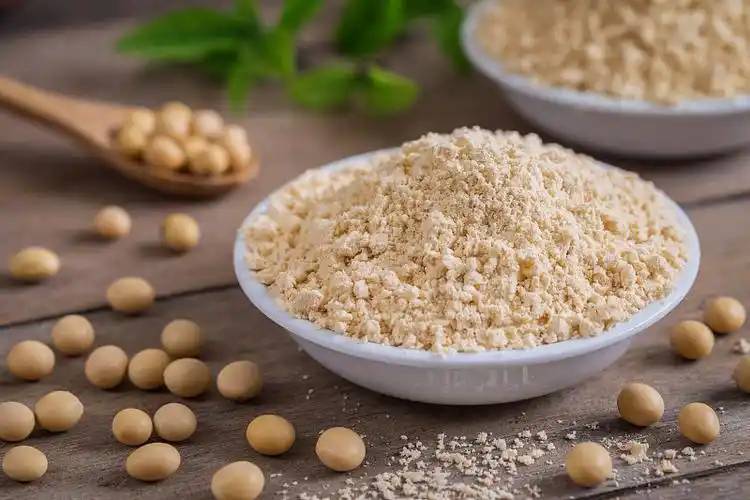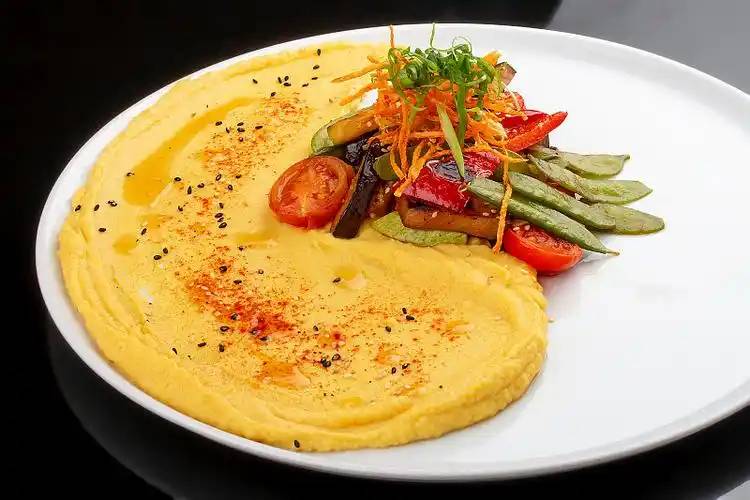What Is the Property of Soy Protein Powder?
Soybeans are an important source of vegetable protein and oil crops. The genetically modified soybeans imported by China are mainly used for oil extraction, and their soybean meal is used for animal feed. The soybean meal from domestically produced non-genetically modified soybeans after oil extraction can be used to prepare soy protein isolate, soy protein concentrate, defatted soy flour, etc., and enter the food chain [1-3].
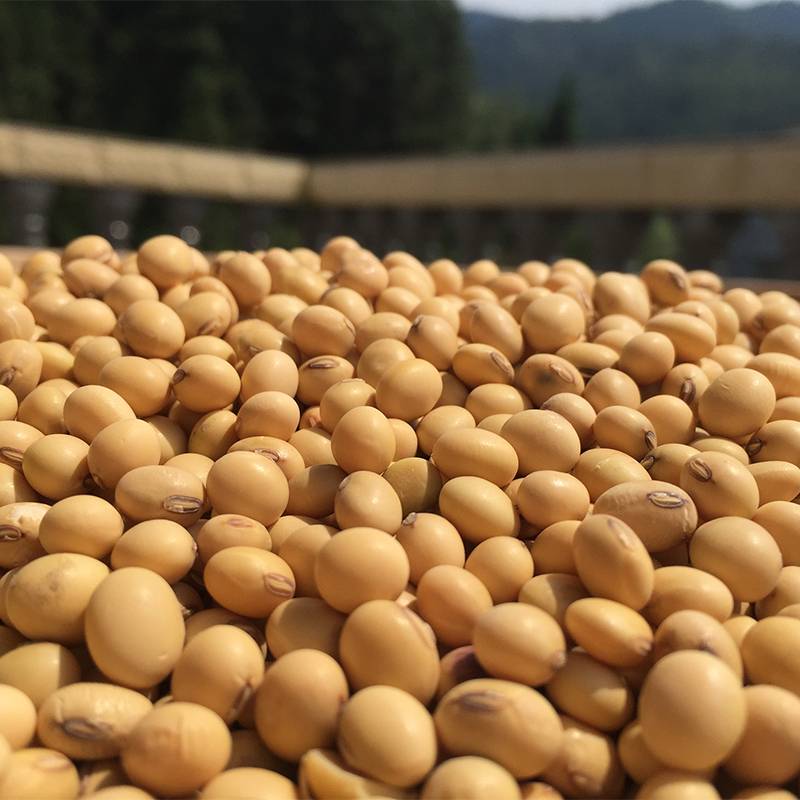
The protein in soybeans is mainly found in the protein body of the seed particle leaf tissue, accounting for about 40% of the total dry matter of the seed [4, 5]. It can be divided into four components according to its sedimentation coefficient at an ionic strength of 0.5 mol/L: 2S, 7S, 11S and 15S [6]. It can also be divided into structural proteins, storage proteins and metabolic proteins such as enzymes that regulate metabolism, synthesize storage substances and create cell structures according to their function [7]. Among them, 7S and 11S are the main storage proteins in soybeans, accounting for about 80% of the total protein content [8]. In addition, a membrane protein, lipophilic proteins (LP), has been found in recent years during the isolation of soy protein. This component is a complex formed by oil-binding proteins such as globulin, β-conglycinin and oil globulin, and phospholipids [9, 10].
The composition and function of soy protein components have a significant effect on the sensory quality of soy or soy protein products such as tofu, soy milk, and vegetable meat [11-13]. Wang Xibo et al. [14] showed that the quality of tofu is better when the relative content of sulfur-containing amino acids in soy protein is higher than 2%, the ratio of 11S to 7S is higher than 1.88, and the relative content of parallel β-folded structures is higher than 39.96%.
Andrew et al. [15] analyzed the effects of soy protein content and globulin subunit composition on the gel properties of tofu, and showed that the higher the protein content, the harder the tofu. The deletion of 11 The absence of the SA4 subunit is positively correlated with tofu hardness and water retention. Zhang et al. [16] reviewed the effects of raw material quality and processing conditions on tofu in recent years, and showed that the quality of tofu is mainly related to soybean globulin and β-conglycinin. Generally, soybean globulin affects the hardness of tofu, while β-conglycinin affects the elasticity of tofu. Therefore, the ratio of 11S to 7S can be regarded as an indicator for selecting varieties suitable for tofu production.
This paper reviews the current research status of the structural composition of soybean protein, focuses on the preparation process of soybean protein components, and summarizes the functionality of different components of soybean protein. The aim is to provide a reference for the quality control of soybeans or soy protein products.
1 Structure of soybean protein components
11S globulin is the most abundant globulin in soybeans. It is mainly composed of glycinin, which contains more sulfur-containing amino acids. Its molecular weight ranges from 320 to 375 kDa. Its structure is a hollow hexamer composed of five subunits under neutral conditions [17]. Each subunit is formed by an acidic polypeptide and a basic polypeptide linked by a disulfide bond. The isoelectric point is pH is about 5.8 [8, 18, 19]. 7S globulin is mainly composed of β-conglycinin, γ-conglycinin and alkaline 7S globulin [8]. Among them, β-conglycinin is the main component of 7S globulin, with a molecular weight of about 180-210 kDa. It exists in the form of a trimer under neutral conditions and is formed by the aggregation of three subunits, α, α′, and β, through hydrophobic interactions. The isoelectric points of α and α′ are 5.2 and 5.3, respectively, while the β subunit is composed of four components components β1-β4 [5, 20-22].
The β-conglycinin structure is particularly special, as the α and α′ subunits have an extended region in addition to the core region, and all three subunits are N-glycosylated, i.e., the N-termini of all three subunits are linked to high-mannose glycans. This makes it very different from the soluble soybean globulin [ 21, 23-25]. The denaturation temperatures of 11S and 7S also differ in different experiments. Generally, β-conglycinin is denatured at 68-72°C, and soy globulin is denatured at 86-90°C [9, 26]. The ratio of 11S to 7S proteins in soybean seeds usually ranges from 0.5 to 1.3, depending on the growth environment and genotype [27-29].
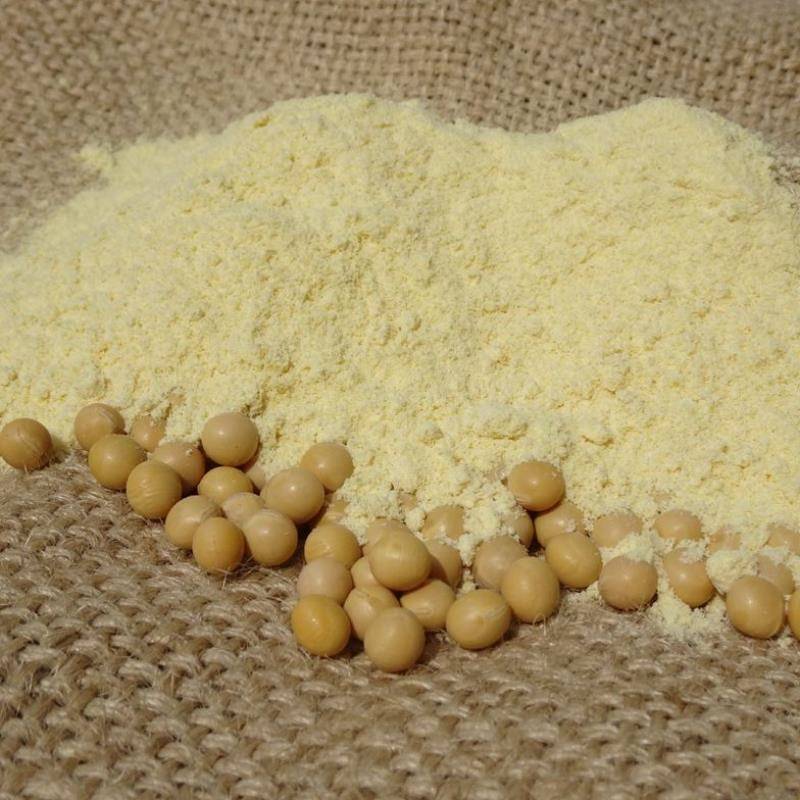
In addition, the 15S content is minimal, at about 5%, but gel filtration chromatography analysis of its molecular weight indicates that the 15S protein can be considered a dimer composed of 11S globulin subunits [8, 30]. The 2S protein is mainly composed of anti-nutritional factors such as trypsin inhibitors (Kunitz trypsin inhibitors). Although its content is only 8%, it can trigger allergic reactions in the human respiratory tract and therefore must be removed [8]. LP contains about 70% protein and 10% lipids, mainly composed of lipoxygenase and membrane proteins [9, 19].
The proteins can be divided according to their molecular weight into oleaginous proteins from the oil body (24 and 18 kDa), proteins from the vacuole (34 kDa), as well as subunits and polypeptides from the 7S and 11S proteins, which account for about 60% of the total LP proteins [9]. The proteins in LP are less sensitive to Coomassie brilliant blue dye, so SDS -PAGE cannot be used to roughly quantify their protein composition. Mashahiko et al. [19] only quantified the lipid-binding proteins that were not removed by hexane during degreasing in 2008 by using the Kjeldahl method and thin-layer chromatography, and finally showed that 7S, 11S, and LP accounted for 23%, 46%, and 31% of the total protein content of defatted soybean meal, respectively.
2 Preparation of soybean protein fractions
Currently, the main commercial soybean protein products are defatted soybean meal, soy protein concentrate and soybean protein isolate (SPI). Among these, soybean protein isolate has the highest protein content, at over 90%; soybean protein concentrate is second, at about 70%; and defatted soybean meal has only had most of the lipids removed from the raw material, leaving about 50% of non-protein components such as polysaccharides, but it is the raw material for soybean protein isolate [5]. However, the extraction methods for 7S, 11S and LP are still far from meeting the standards of assembly line production. The extraction processes and parameters for the three protein components are shown in Figure 1 and Table 1 respectively.
Initially, Nagano et al. [31] proposed a purification scheme for 7S and 11S for the first time in order to determine the dynamic rheological parameters of 7S soy globulin gel. The method uses defatted soybean meal as the raw material, which is mixed with distilled water, allowed to stand at room temperature for 1 h, and then centrifuged after the insoluble components have been removed by sieving. After centrifugation, sodium bisulfite is added to the supernatant at a concentration of 0.98 g/L to adjust the pH to 6.4.
The supernatant is then stored overnight in an ice bath, centrifuged again, and the precipitate obtained at this time is considered to be 11S. The supernatant is then 0.25 mol/L NaCl solution and adjusted to pH 5.0, centrifuged again; the supernatant after centrifugation was mixed with 2 times the volume of distilled water to adjust the pH to 4.8, centrifuged again, and the precipitate at this time was 7S globulin. The extraction rates of 11S and 7S in defatted soybean meal obtained by this method are 10% and 6% respectively, and the purity can reach more than 90%. Among them, 0.25 mol/L NaCl, pH 5.0 and 4°C are considered to be the best conditions for separating 7S protein, while sodium bisulfite acts as a reducing agent to increase the protein extraction rate [32]. This method lays the foundation for the basic separation scheme of “three-step acid precipitation” of soy protein.
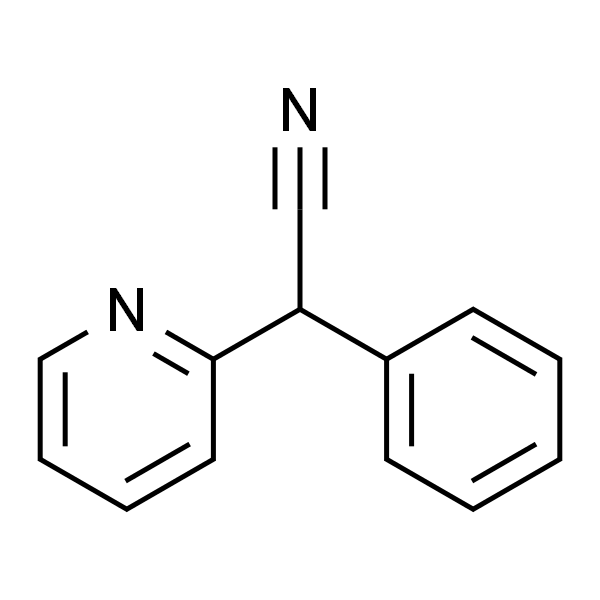
Since 1992, many studies have been devoted to optimizing the extraction of soy protein, mainly based on the influence of temperature, pH and ionic strength on protein conformation during the extraction process [31, 33-35]. Deak et al. [33] used CaCl2 instead of NaCl to simplify the extraction process. Due to the difference in surface charge density, calcium ions are more likely to bind to 11S at pH 6.4. Although this method improves protein yield but the purity was low. Liu et al. [34] selected the type of alkaline extraction solution, the pH of the alkali solution, the extraction temperature, the ratio of defatted soybean meal to Tris-HCl buffer, and sodium bisulphite (SBS) as the five factors, and carried out single-factor optimization experiments in order of 11S and 7S protein content, purity and extraction rate as indicators. The results showed that using 0.3M Tris-HCl buffer as the extraction solution can significantly increase the yield of 11S and 7S by 2.01 and 1.16 percentage points, respectively.
During the process of increasing the pH of the alkali solution from 7.5 to 9.0, the yield and purity of the two proteins first increased and then decreased. The extraction effect was best at pH 8.5. The extraction temperature refers to the temperature of the alkali solution. During the process of increasing the temperature from 25 °C to 45 °C, the yield of the two proteins increased significantly, and then decreased significantly between 45 °C and 65 °C. Compared with Nagano et al. [31], the extraction effect at room temperature was better, but 45 ~55℃ did not reach the denaturation temperature of the two proteins; and increasing the mass of buffer required per unit mass of soybean flour is the simplest and most effective method of increasing protein solubility and thus yield and purity, but this also needs to take into account the capacity of the container used and is not suitable for use in production; breaking disulfide bonds by SBS to reduce protein aggregation can also improve solubility, but as the concentration of SBS increases, the yield, protein content and purity of the two proteins all first increase and then decrease trend, and the maximum value is reached at a concentration of 0.01 mol/L.
On this basis, Din Jalal Ud et al. [36] noted in 2021 the influence of pretreatment conditions and raw material type on the extraction effect, and recovered the intermediate product obtained by secondary acid precipitation for the extraction of 11S protein. The results showed that pretreatment of soybean grains, defatted soybean meal, and soybean isolate protein with phytase can significantly improve the purity of 11S and 7S. Among them, the extraction of 11S with soybean isolate protein is the most effective, with a purity of up to 97.16% and a yield of up to 48.92%. However, the yield of 7S decreased significantly after enzymatic treatment.
In fact, there are not only 7S and 11S proteins in soy protein isolate, but also a large number of membrane proteins around the seed protein body and oil body [9]. Previous studies have shown that soy protein extracted by this acid precipitation method tastes bad, and some proteins that are bound to lipids, that is, LP, remain [32]. Inspired by this, Mashahiko et al. [19] focused on the reaction of LP during protein extraction and designed a new extraction method to ensure protein quality.
The method uses low-temperature defatted soybean meal preheated to 70-80°C as raw material. The method differs significantly from Nagano's method in that 5 mol/l dilute sulfuric acid and sodium hydroxide are used to adjust the pH; 11S protein is extracted after the pH is adjusted to 5.8, and then adjusted to 5.0 and then to 5.5 before centrifugation to extract LP. Finally, the pH is adjusted to 4.8 to obtain 7S protein; no large amounts of salt and cooling are required for the separation process. The key to this method for extracting lipophilic proteins is that LP is strongly hydrophobic and therefore easily subjected to salting out. At pH 5.0, both LP and 7S are in an insoluble state, and at 5.5, 7S is dissolved while LP remains insoluble. In addition, preheating can ensure the extraction of 7S and 11S, but too high a temperature will reduce the extraction rate of LP. The discovery of LP indirectly explains the phenomenon of low impurities of 11S and 7S extracted by previous methods, and also prompted some researchers to start exploring its functionality.
3 Functional properties of soy protein fractions
Processing conditions can cause proteins to change from their natural state to an intermediate state and eventually to be completely denatured, and thus their functionality [37]. During this transformation process, the molecular weight and primary structure of the protein usually remain unchanged. The main changes are reflected in the changes in the surface amino acid composition caused by changes in the secondary and tertiary structure of the protein, which provide conditions for protein-protein and protein-other component interactions. Therefore, the natural state of a protein does not determine its full functional picture. It is also necessary to understand the structural transition behavior of proteins during folding and unfolding in environments such as solutions, interfaces, and gels.
3.1 Solubility
The solubility of a protein is usually the primary function that needs to be investigated for the production of products such as gels, emulsions, and drinks. It can be expressed as the percentage of total nitrogen in a sample that is in a soluble state in a specific solution. Solubility is not only related to the amino acid composition, sequence, molecular weight, and protein conformation of the protein itself, but also to environmental factors such as ionic strength, pH, and temperature [38, 39]. Based on the protein structure, it can be speculated that the polysaccharide attached to the N-terminus of β-conglycinin under neutral conditions will make it more soluble in water. This result has been confirmed in the literature [40, 41].
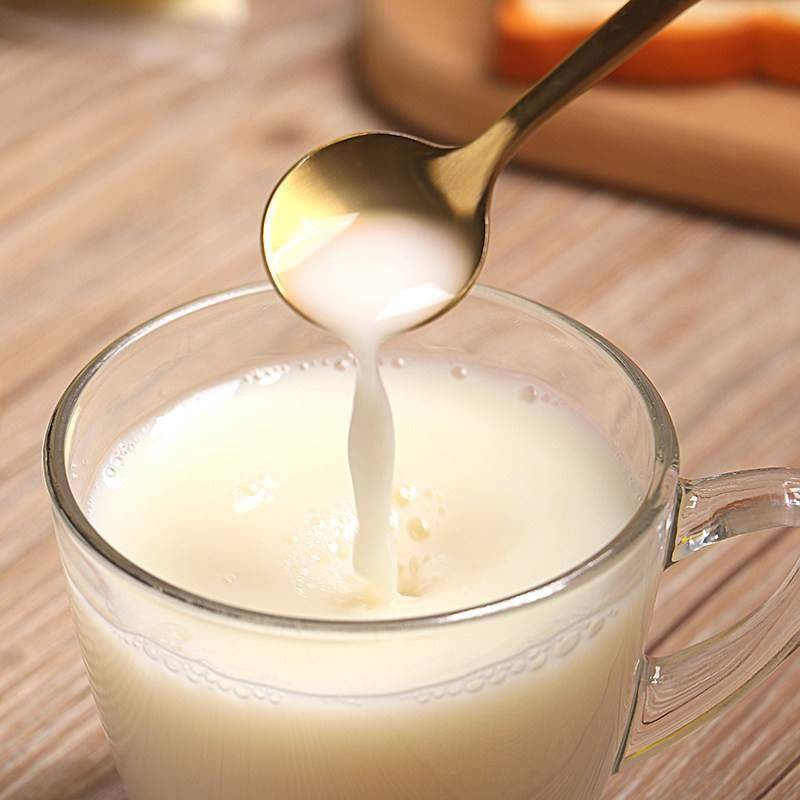
Jiang et al. [40] used the same defatted soybean meal to prepare SPI and three types of proteins: 11S and 7S. The resulting samples were dispersed in a 20 mg/ml concentration in a pH 7.0, 10 mM sodium phosphate solution. By adjusting the pH of the dispersion, it was shown that 7S had the greatest solubility (90%) at pH 7.0, followed by SPI (80%) and 11S (60%). The solubility curves of the three proteins all show a U-shaped pattern as a function of pH. 7S and SPI both have the lowest solubility at around pH 4.5, while 11S reaches its lowest solubility at pH 5.0, indicating that the isoelectric points of 11S and 7S are around pH 4.5 and 5.0 respectively. In addition, the solubility of the three proteins all shows a decreasing trend as the salt concentration increases.
Under the conditions of 0mol/L-0.1mol/L-0.6mol/L NaCl, the difference in solubility changes of 11S and 7S was 82.2%-82.0%-53.7% and 93.9%-88.7%-8.2% respectively. This is related to the ionic effect of NaCl. At the isoelectric point (pH 4–5), Na+ and Cl− interact with the charged groups on the protein surface, which can form a double electron layer at the crystal-solution interface, thereby increasing the apparent solubility of the soy protein. Outside the isoelectric point, high concentrations of ions can neutralize the heteroelectric charges on the protein and thus reduce the net charge gain caused by adjusting the pH of the solution.
The solubility of soy protein is also affected by thermal aggregation behavior. Some studies have proposed the Lumry–Eyring nucleation aggregation model, which suggests that protein aggregation consists of multiple stages, including conformational changes, pre-nucleation, irreversible aggregate nucleation, increased aggregation, and self-association of aggregates [42–44]. Tang Chuanhe et al. [41] showed that after preheating at 80 °C, SPI only exhibited an endothermic peak corresponding to 11S at 97.6 °C endothermic peak, which may be due to the fact that 7S was completely unfolded at 80 °C and formed a more stable aggregate with 11S. Jian et al. [21] further demonstrated the difference in aggregation behavior between β-conglycinin and glycinin during heating. The solubility of β-conglycinin remained basically unchanged during heating from 50 °C to 100 °C, while the solubility of glycinin decreased with increasing temperature trend. When the soy globulin and β-conglycinin are mixed in a ratio of 4:1, 2:1, and 1:1, respectively, the complex aggregates become smaller and the solubility increases with the addition of β-conglycinin.
Hydrophobic interactions may be the main driving force for protein aggregation [45]. The mechanism of thermal aggregation of the two proteins is shown in Figure 2. When aggregation occurs, for β-conglycinin, once the hydrophobic residues are covered and aggregates are formed, the polysaccharides and hydrophilic groups on the surface provide repulsive forces to inhibit other monomers from approaching; however, there are more hydrophobic amino acids in the basic polypeptide of the soy globulin, so it will unfold to expose more active sites. Although some of the active sites are covered during the aggregation process, hydrophobic residues still exist on the surface of the aggregates, causing the active sites to continue aggregating.
In the presence of β-conglycinin, the hydrophobic residues on the surface of the globulin aggregates are no longer covered, but instead the hydrophilic groups of β-conglycinin, which terminates the aggregation process. In addition, the thermal aggregation behavior of these proteins is also concentration-dependent. Increasing the protein concentration reduces the spacing between proteins, effectively promoting aggregation [46, 47]. Ye Rongfei et al. [48] showed that the solubility of SPI at different concentrations after heat treatment at 80 °C, 100 °C, and 120 °C decreased with increasing protein concentration. Chen Nannan et al. [49] believed that spontaneous binding of natural soy protein at high concentrations leads to the formation of aggregates with a larger radius of gyration and stronger protein-protein interactions.
Improvements in breeding and protein extraction processes have provided a better way to obtain a soy protein with a higher degree of purity. Yuan et al. [50] used defatted soybeans as raw material, and successfully obtained three subunits of β-conglycinin with high purity: β (91.4%), α (95.0%), and α′ (92.1%) by DEAE-Sepharose fast flow chromatography combined with immobilized metal ion affinity chromatography. 1%. On this basis, He Xiuting et al. [25] showed that the thermal aggregation of 7S protein is mainly dominated by β subunit, and the thermal aggregation of 11S protein is dominated by basic polypeptide.
The peak area of the chromatographic peak corresponding to the component with a higher molecular weight (>669 kDa) during heating of β subunit at 50-90 °C increased significantly, while the molecular weight distribution of α and α′ subunits basically did not change with heating; Some acidic polypeptides of the 11S protein did not aggregate at all during heating, while a large amount of insoluble matter was produced after heating at 90 °C for 30 min during the extraction of basic polypeptides. Dynamic light scattering results show that the particle size of 11S and acidic polypeptides both increased from 50°C to 90°C, with the Ζ-average diameter of the two increasing from 56 nm to 158 nm (11S) and 79 nm to 112 nm (acidic polypeptides), respectively. The particle size of 7S increased less during heating (from 29 nm to 44 nm). and α′ subunits remained stable at around 29 nm at all temperatures, while the Ζ-average diameter of the β subunit reached 70 nm at 50 °C and increased to 158 nm at 90 °C. Therefore, β subunits in 7S are more prone to aggregate.
Comparing the results of surface hydrophobicity between different protein subunits and polypeptides, the surface hydrophobicity H0 of 11S is about 5000 at 60°C, and then increases sharply with increasing temperature, reaching a peak of 12000 at 80°C. The H0 of acidic polypeptides changes slightly during heating, and also reaches a peak of 4200 at 80°C. The peaks of H0 of 7S, β subunit, and α and α′ subunits heated at different temperatures fluctuate around peaks of 8000, 7800 and 6000, respectively. In addition, the surface hydrophobicity of the protein, subunits and peptides all increased rapidly during the first 10 minutes of heating.
These conclusions are similar to those of Jian et al. [21], that is, globular protein molecules first undergo a folding transition, and after heating at the denaturation temperature for a certain period of time, the globular structure unfolds, exposing more hydrophobic residues and increasing the surface hydrophobicity. This difference in the thermal aggregation behavior of subunits and polypeptides may be related to the amino acid composition of the protein primary structure. For example, basic polypeptides containing more hydrophobic amino acids such as Val, Leu, and Ala can form insoluble aggregates at room temperature [51]. The β subunit also contains more hydrophobic amino acids and has only one N-linked high-mannose glycans in the extension region of its structure, but the α and α′ subunits each contain two, so the β subunit is more prone to aggregate than the α and α′ subunits. Therefore, the solubility of soy globulin is greatly affected by temperature, and the solubility of β-conglycinin is greatly affected by ionic strength.
3.2 Gelation
Gel is a special state of matter between the solid and liquid states. Most foods can be eaten in a gel state. When the intermolecular interactions of a protein solution increase, the degree of cross-linking increases to a certain extent and the solution transforms into a gel [37]. The basic formation process of a heat-induced gel of soy protein is as follows: soy protein dispersed in water first forms a sol in the form of a tightly curled shape. As the temperature increases, the protein gradually denatures and unfolds. Aggregates form between adjacent molecules, while the high temperature accelerates molecular movement. Hydrophobic interactions between proteins become more frequent, and after reaching equilibrium, a gel with a certain network structure is formed, with some of the free water being trapped in the gel network [52]. During this process, covalent interactions such as disulfide bonds play a leading role, while non-covalent interactions such as hydrogen bonds and electrostatic repulsion also exist [37]. The critical protein concentrations for 11S and 7S to form gels at 100 °C in 35 mM phosphate buffer (pH 7.6) are 2.5% and 7.5%, respectively [53]. 11S thermogels are formed mainly through disulfide bonds and electrostatic interactions, while 7S thermogels are formed through hydrogen bonds [16]. Therefore, pH and temperature conditions can also affect the structure and properties of the gel by influencing the protein aggregates [54, 55].
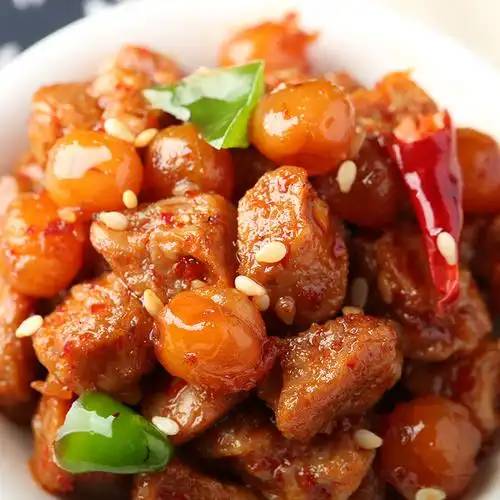
It can be inferred from the higher aggregation of heat-induced gels of soy globulin that the storage modulus should also be relatively large. Renkema et al. [56] confirmed this conclusion. The temperature scanning results of heat-induced gels prepared from the same soybeans with soy globulin (purity 95%) and β-conglycinin (purity 60%) showed that the G' of the soy globulin and β-conglycinin gels at the end of cooling was 4000 Pa and 2500 Pa at pH 3.8, and 7400 Pa for the former and and 5400 Pa for the latter. The rupture stress of the 11S protein gels at pH 3.8 and 7.6 is also significantly higher than that of the β-conglycinin gels, 46.2 and 18.1 kPa for the former and 2.1 and 2.2 kPa for the latter. The difference in the storage modulus of the two protein gels may also be due to the different content of sulfur-containing amino acids. The 11S protein has 3 to 4 times more methionine and cysteine per unit protein. Methionine and cysteine are 3–4 times more abundant in 11S protein than in 7S protein [57], so 11S has a stronger cross-linking network during gel formation.
Eduarda et al. [58] also showed that the energy storage modulus of heat-induced gels is not directly related to the ratio of 11S to 7S (R2<0.50), and also depends on the content of an acidic A3 subunit with a low cysteine residue content. Dynamic rheological results of heat-induced gels of isolated soy proteins from 11 different soybean globulin and β-conglycinin subunit-deficient soybeans and one normal protein-composed soybean showed that when the A3 subunit accounts for less than 2% of the total protein content, the 11S subunit content is correlated with the G' of the gel when it is fully formed (R2>0.967).
When the A3 subunit accounts for less than 2% of the total protein content, there is a correlation between the 11S subunit content and the G' value of the fully formed gel (R2>0.967). When the A3 subunit accounts for more than 2% of the total protein content, there is no correlation between the G' value of the fully formed gel and the composition of the soy protein. There is also no significant difference in the gel storage modulus between varieties with high 11S content and varieties with low 11S content. In other words, the 7S protein is the main structural monomer of the heat-induced gel, which may be caused by insufficient unfolding of the 11S protein at 90 °C. This is similar to the findings in tofu research, where a correlation between the composition of the 11S subunit and gel hardness was found [15, 59]. In addition, since protein unfolding is a prerequisite for gel formation, it can be predicted that the gelation temperature of β-conglycinin, which has a lower heat transition temperature, is lower than that of soy globulin (G''/G'=1). The gelation temperature of varieties with higher 7S content is 74.2–82.2°C, while that of varieties with higher 11S content is 86.2–90.2°C .
3.3 Rheological properties
Rheological testing can destroy the material structure by applying a large strain or frequency, thereby reflecting the phase transition of the raw material during processing to a certain extent. It is characterized by parameters such as viscosity, storage modulus, loss modulus, and torque [60-62]. For example, if the protein viscosity is too high, lumps will often form during processing that cannot be dissolved. Obviously, changes in the rheological properties of materials are affected not only by process parameters but also by the composition of the material itself.
Murillo et al. [60] showed that for high-moisture extruded soy protein products, the velocity gradient caused by the difference in viscosity is the key to the formation of fibrous structures. Patrick et al. [63] showed that the steady-state scanning results of four soy protein isolate gels with basically the same source and protein content (more than 90% of the total dry matter) showed that under the same conditions, the complex viscosities at 60 s were 44 kPa·s (SPI 1) ), 43 kPa·s (SPI 2), 34 kPa·s (SPI 3), and 14 kPa·s (SPI 4). This difference can be attributed to the different degrees of denaturation caused by different extraction processes [64].
In this experiment, the protein content of soy protein concentrate was about 67% of the total dry matter, but under the same conditions, its viscosity (101 kPa·s) was more than twice that of soy protein isolate [63]. This indicates that the higher proportion of other ingredients such as polysaccharides in the raw material also has an effect on viscosity, which is similar to the results of Zhang Wei et al. [65] in the study of extruded vegetable proteins. The ΔH of soy protein isolate is 0.72 J/g. Soy protein isolate and gluten flour were mixed with wheat starch, corn starch, potato starch, sweet potato starch, tapioca starch, mung bean starch, pea starch, potato amylopectin, and corn amylopectin (soy protein isolate: gluten: starch = 65:15:20) and mixed with 9 types of starch (wheat starch, corn starch, potato starch, sweet potato starch, tapioca starch, mung bean starch, pea starch, potato amylopectin, corn amylopectin). The ΔH of the mixed powder ranged from 1.24 to 2.42 J/g, and the viscosity of the mixture when extruded ranged from 308.70 to 633.61 Pa·s. The ΔH and viscosity of the mixture were positively correlated (P<0.05).
Most studies discuss the influence of the physicochemical properties of the protein components on the formation of the gel structure, but this is not sufficient to explain the changing behavior during gel processing [66-69]. Mellema et al. [70] first proposed that the unfolded proteins are interconnected.
Most studies discuss the influence of the physicochemical properties of the protein components on the formation of the gel structure, but this is not sufficient to explain the changing behavior during gel processing [66-69]. Mellema et al. [70] first proposed that the curvature and connection mode of the chains formed by the interconnection of unfolded proteins determine the way in which the gel will deform microscopically. For example, the main deformation mode of gels with curved chains is bending, while straight and interconnected chains deform by stretching . On this basis, Renkama [71] showed that the more bent the protein chain, the greater the strain when the gel breaks, because the bent chain must first straighten before breaking. Wenjie Xia et al. [72] showed by means of large-amplitude oscillatory shear tests that the intrinsic viscosity and intermolecular interaction strength of thermogels formed from soy protein isolate, 11S-enriched protein (11S content 72.1%, 7S content 3.3%) and 7S-enriched protein (7S content 30.4%, 11S content 4.2%) differ in terms of intrinsic viscosity and the strength of intermolecular interactions of the resulting thermogels.
At a low protein concentration (6%), the relationship between the three G' values is as follows: 11S-enriched protein (600 Pa) > soy protein isolate (300 Pa) > 7S-enriched protein (60 Pa). The G' value at a lower protein concentration reflects the intrinsic viscosity of the dispersed phase when there are no or few interactions such as collisions and agglomeration between molecules. Therefore, the intrinsic viscosity of 11S-enriched protein is stronger, followed by soy protein isolate. However, the intermolecular interactions of the 7S-enriched protein are stronger, which can be reflected by the G'-protein concentration curves of the three proteins. The slope of the corresponding curve of the 7S-enriched protein is the largest (281.25).
Next is the isolated soy protein (266.67), and the 11S-enriched protein is the smallest (150), that is, for every unit increase in protein concentration, the 7S-enriched protein has a greater degree of molecular collision and aggregation, and G' increases the fastest. This may be due to the insufficient unfolding of the soy globulin, and the rigid structure of the globulin particles inhibits intermolecular cross-linking [73, 74]. For the 7S-rich protein gel, it may be due to the greater flexibility of β-conglycinin, which forms more branched particles with closer interconnections. As the strain increases, the initially dissociated particles will intertwine with each other to form new clusters [75]. The results of the confocal laser scanning microscopy and scanning electron microscopy in this experiment showed that the soy protein isolate and 11S-rich gel had relatively dense networks composed of larger aggregates, while the 7S-rich protein gel was rougher and more uneven, composed of smaller particles with more branches [76].
4 Conclusion
Although soybeans are widely used in food production in China, due to the diversity of their components and extraction processes, companies still rely on empirical selection for the regulation of product quality. The correlation between the composition, structure, functionality and sensory quality of raw materials is still relatively vague. This paper provides knowledge about the composition and industrial production of soy protein in recent years, focusing mainly on the introduction of protein extraction processes and functionality. There are still gaps in the isolation and identification of soy components and the means of characterizing protein functionality. In addition, in order to achieve green production and reduce carbon emissions, the use of by-products such as okara and soybean meal should be encouraged, for example, by using extrusion cooking to produce vegetarian meat products, developing soy active peptides, and producing bio-based plastic products.
Reference:
[1]LIU S, ZHANG M, FENG F, et al. Toward a "Green Revolution" for Soybean[J]. Molecular Plant, 2020, 13(5): 688-697.
[2]SCHREUDERS F K G, DEKKERS B L, BODNAR I, et al. Comparing structuring potential of pea and soy protein with gluten for meat analogue preparation[J]. Journal of Food Engineering, 2019, 261(NOV): 32-39.
[3]MEDIC J, ATKINSON C, HURBURGH C R. Current Knowledge in Soybean Composition[J]. Journal of the American Oil Chemists' Society, 2014, 91(3): 363-384.
[4]KRISHNAN H B, NELSON R L. Proteomic analysis of high protein soybean (Glycine max) accessions demonstrates the contribution of novel glycinin subunits[J]. Journal of Agricultural and Food Chemistry, 2011, 59(6): 2432-2439.
[5]PREECE K, HOOSHYARN, ZUIDAM N J. Whole soybean protein extraction processes: A review[J]. Innovative Food Science &Emerging Technologies, 2017, 43: 163-172.
[6]Whitaker J R, Shahidi N, Munguia A L, et al. Functional Properties of Proteins and Lipids[M]. Washington DC: American Chemical Society, 1998: 80-95.
[7]HERMAN E M. Soybean seed proteome rebalancing[J]. Frontiers in Plant Science, 2014, 5: 437.
[8]SINGH A, MEENAM, KUMAR D, et al. Structural and functional analysis of various globulin proteins from soy seed[J]. Critical Reviews in Food Science and Nutrition, 2015, 55(11): 1491-1502.
[9]MATSUMURA Y, SIRISON J, ISHI T, et al. Soybean lipophilic proteins — Origin and functional properties as affected by interaction with storage proteins[J]. Current Opinion in Colloid &Interface Science, 2017, 28: 120-128.
[10] Zeng Jianhua, Liu Linlin, Yang Yang, et al. Analysis of the lipophilic protein fraction of soybeans and its in vitro antioxidant properties [J]. Food Science, 2020, 41(14): 58-65.
[11]REN C, TANG L, ZHANG M, et al. Structural characterization of heat-induced protein particles in soy milk[J]. Journal of Agricultural and Food Chemistry, 2009, 57(5): 1921-1926.
[12]ZHANG X, ZHANG S, XIE F, et al. Soy/whey protein isolates: interfacial properties and effects on the stability of oil-in-water emulsions[J]. Journal of the Science of Food and Agriculture, 2021, 101(1): 262-271.
[13]WANG T, QIN G X, SUN Z W, et al. Advances of research on glycinin and β-conglycinin: a review of two major soybean allergenic proteins[J]. Critical Reviews in Food Science and Nutrition , 2014, 54(7): 850-862.
[14] Wang Xibo, Nie Xin, Liao Yi, et al. Relationship between soy protein and the quality characteristics of Qianye tofu [J]. Food Science, 2020, 41(07): 30-37.
[15]JAMES A T, YANG A. Interactions of protein content and globulin subunit composition of soybean proteins in relation to tofu gel properties[J]. Food Chemistry, 2016, 194(MAR.1): 284-289.
[16]ZHANG Q, WANG C, LI B, et al. Research progress in tofu processing: From raw materials to processing conditions[J]. Critical Reviews in Food Science and Nutrition, 2018, 58(9): 1448-1467.
[17]ADACHI M, KANAMORI J, MASUDA T, et al. Crystal structure of soybean 11S globulin: Glycinin A3B4 homohexamer[J]. Proceedings of the National Academy of Sciences, 2003, 100(12): 7395.
[18]STASWICK P E, HERMODSON M A, NIELSEN N C. Identification of the acidic and basic subunit complexes of glycinin[J]. Journal of Biological Chemistry, 1981, 256(16): 8752-8755.
[19]SAMOTO M, MAEBUCHI M, MIYAZAKI C, et al. Abundant proteins associated with lecithin in soy protein isolate[J]. Food Chemistry, 2007, 102(1): 317-322.
[20]THANH V H, SHIBASAKI K. Major proteins of soybean seeds. Subunit structure of β-conglycinin[J]. Journal of Agricultural and Food Chemistry, 1978, 26(3): 692-695.
[21]GUO J, YANG X Q, HE X T, et al. Limited aggregation behavior of β-conglycinin and its terminating effect on glycinin aggregation during heating at pH 7.0[J]. Journal of Agricultural and Food Chemistry, 2012, 60(14): 3782-3791. [22] PETRUCCELLI S, ANON M C. Soy Protein Isolate Components and Their Interactions[J]. Journal of Agricultural and Food Chemistry, 1995, 43(7): 1762-1767.
[23]SONG B, OEHRLE N W, LIU S, et al. Development and Characterization of a Soybean Experimental Line Lacking the α' Subunit of β-Conglycinin and G1,G2,and G4 Glycinin[J]. Journal of Agricultural and Food Chemistry, 2018, 66(2): 432-439.
[24]MARUYAMA N, KATSUBE T, WADA Y, et al. The roles of the N-linked glycans and extension regions of soybean beta-conglycinin in folding, assembly and structural features[J]. European Journal of Biochemistry, 1998, 258(2): 854-862.
[25]HE X T, YUAN D B, WANG J M, et al. Thermal aggregation behaviour of soy protein: characteristics of different polypeptides and sub-units[J]. Journal of the Science of Food and Agriculture, 96(4): 1121-1131.
[26]MA W, XIE F, ZHANG S, et al. Characterizing the Structural and Functional Properties of Soybean Protein Extracted from Full-Fat Soybean Flakes after Low-Temperature Dry Extrusion[J]. Molecules (Basel, Switzerland), 2018, 23(12): 3265.
[27]YANG A, JAMES A T. Effects of soybean protein composition and processing conditions on silken tofu properties[J]. Journal of the Science of Food and Agriculture, 2013, 93(12): 3065-3071.
[28]LAMBRECHT M A, ROMBOUTS I, DE KETELAERE B, et al. Prediction of heat-induced polymerization of different globular food proteins in mixtures with wheat gluten[J]. Food Chemistry, 2017, 221: 1158-1167.
[29]WRIGHT D J. The seed globulins ‐ part II[J]. Developments in Food Proteins – 6, 1988: 119-178.
[30]LUTHRIA D L, MARIA J K M, RAMESH M, et al. Recent update on methodologies for extraction and analysis of soybean seed proteins[J]. Journal of the Science of Food and Agriculture, 2018, 98(15): 5572-5580.
[31]NAGANO T, HIROTSUKA M, MORI H, et al. Dynamic viscoelastic study on the gelation of 7S globulin from Soybeans[J]. Journal of Agricultural and Food Chemistry, 1992, 40(6): 941-944.
[32]IWABUCHI S, YAMAUCHI F. Determination of glycinin and beta-conglycinin in soybean proteins by immunological methods[J]. Journal of Agricultural and Food Chemistry, 1987, 35(2): 200-205.
[33]DEAK N A, MURPHY P A, JOHNSON L A. Effects of Reducing Agent Concentration on Soy Protein Fractionation and Functionality[J]. Journal of Food Science, 2006, 71(3): 200-208.
[34]LIU C, WANG H, CUI Z, et al. Optimization of extraction and isolation for 11S and 7S globulins of soybean seed storage protein[J]. Food Chemistry, 2007, 102(4): 1310-1316.
[35]LIU M M, QI B, LIU Z X, et al. Optimization of low-abundance protein extraction and abundant protein removal from defatted soybean meal[J]. Journal of Zhejiang University-SCIENCE B, 2017, 18(10): 878-885.
[36]DIN J U, SARWAR A, LI Y, et al. Separation of Storage Proteins (7S and 11S) from Soybean Seed, Meals and Protein Isolate Using an Optimized Method Via Comparison of Yield and Purity[J]. Protein Journal, 2021, 40(3): 396-405.
[37]FOEGEDING E A, DAVIS J P. Food protein functionality: A comprehensive approach[J]. Food Hydrocolloids, 2011, 25(8): 1853-1864.
[38]ZAYAS J F.Functionality of Proteins in Food[M].Berlin Heidelberg: Springer,1997: 6-75.
[39]SIRISON J, MATSUMIYA K, SAMOTO M, et al. Solubility of soy lipophilic proteins: comparison with other soy protein fractions[J]. Bioscience, Biotechnology, and Biochemistry, 2017, 81(4): 790-802.
[40]JIANG J, XIONG Y L, CHEN J. pH Shifting Alters Solubility Characteristics and Thermal Stability of Soy Protein Isolate and Its Globulin Fractions in Different pH, Salt Concentration, and Temperature Conditions[J]. Journal of Agricultural & Food Chemistry, 2010,58(13): 8035-8042.
[41]TANG C H, CHOI S M, MA C Y. Study of thermal properties and heat-induced denaturation and aggregation of soy proteins by modulated differential scanning calorimetry[J]. International Journal of Biological Macromolecules, 2007, 40(2): 96-104.
[42]ROBERTS C J. Non-native protein aggregation kinetics[J]. Biotechnology & Bioengineering, 2007, 98(5): 927-38.
[43]LI Y, ROBERTS C J. Lumry-Eyring nucleated-polymerization model of protein aggregation kinetics. 2. Competing growth via condensation and chain polymerization[J]. The Journal Physical Chemistry B, 2009, 113(19): 7020-7032.
[44]ANDREWS J M, ROBERTS C J. ALumry-Eyring nucleated polymerization model of protein aggregation kinetics: 1. Aggregation with pre-equilibrated unfolding[J]. The Journal Physical Chemistry B , 2007, 111(27): 7897-7913.
[45]XIAO J, SHI C, ZHANG L, et al. Multilevel structural responses of β-conglycinin and glycinin under acidic or alkaline heat treatment[J]. Food Research International, 2016, 89(1): 540-548.
[46]ESFANDIARY R, PARUPUDI A, CASAS-FINET J, et al. Mechanism of Reversible Self-Association of a Monoclonal Antibody:Role of Electrostatic and Hydrophobic Interactions[J]. Journal of Pharmaceutical Sciences, 2015, 104(2): 577-586. DOI:
[47]JIANG Y, LI C, LI J, et al. Technical Decision Making with Higher Order Structure Data: Higher Order Structure Characterization During Protein Therapeutic Candidate Screening[J]. Journal of Pharmaceutical Sciences, 2015, 104(4): 1533-1538.
[48] Ye Rongfei, Yang Xiaoquan, Zheng Tianyao, et al. Effects of heat denaturation and heat aggregation on the solubility of soy protein isolate. Food Science, 2008, (07): 106-108.
[49]CHEN N, ZHAO M, CHASSENIEUX C, et al. Thermal aggregation and gelation of soy globulin at neutral pH[J]. Food Hydrocolloids, 2016, 61: 740-746.
[50]YUAN D, MIN W, YANG X, et al. An Improved Isolation Method of Soy β-Conglycinin Subunits and Their Characterization[J].Journal of the American Oil Chemists' Society, 2010, 87: 997-1004.
[51] YUAN D, YANG X, TANG C, et al. Physicochemical and functional properties of acidic and basic polypeptides of soyglycinin[J]. FOOD RESEARCH INTERNATIONAL, 2009, 42(5): 700-706.
[52] Xia Xiufang, Kong Baohua, Zhang Hongwei. Research progress on the mechanism and influencing factors of myofibrillar protein gel formation [J]. Food Science, 2009, 30(09): 264-268.
[53]NAKAMURA T, UTSUMI S, MORI T. Interactions During Heat-induced Gelation in a Mixed System of Soybean 7S and 11S Globulins[J]. Agricultural and Biological Chemistry, 1986, 50: 2429-2435.
[54]RENKEMA J M S, LAKEMOND C M M, JONGH H H J D, et al. The effect of pH on heat denaturation and gel forming properties of soy proteins[J]. Journal of Biotechnology, 2000, 79(3): 223-230.
[55]LEFèVRE F, FAUCONNEAU B, OUALI A, et al. Thermal gelation of brown trout myofibrils from white and red muscles: Effect of pH and ionic strength[J]. Journal of the science of food and agriculture, 2002, 82: 452-463. DOI: 10.1002/jsfa.1057.
[56]RENKEMA J M S, KNABBEN J H M, VAN VLIET T. Gel formation by β-conglycinin and glycinin and their mixtures[J]. Food Hydrocolloids, 2001, 15(4): 407-414.
[57]KITAMURA K. Genetic Improvement of Nutritional and Food Processing Quality in Soybean[J]. JOURNAL OF THE BREWING SOCIETY OF JAPAN, 1994, 89: 926-931.
[58]BAINY E, TOSH S, CORREDIG M, et al. Protein Subunit Composition Effects on the Thermal Denaturation at Different Stages During the Soy Protein Isolate Processing and Gelation Profiles of Soy Protein Isolates[J]. Journal of Oil & Fat Industries, 2008, 85: 581-590.
[59]MENG S, CHANG S, GILLEN A M, et al. Protein and quality analyses of accessions from the USDA soybean germplasm collection for tofu production[J]. Food Chemistry, 2016, 213: 31-39.
[60]SANDOVAL M J L, OSEN R, HIERMAIER S, et al. Towards understanding the mechanism of fibrous texture formation during high-moisture extrusion of meat substitutes[J]. Journal of Food Engineering, 2019, 242: 8-20.
[61]AKDOGAN H. High moisture food extrusion[J]. International Journal of Food Science & Technology, 1999, 34(3): 195-207.
[62]ZHAO X, HUEBSCH N, MOONEY D J, et al. Stress-relaxation behavior in gels with ionic and covalent crosslinks[J]. Journal of Applied Physics, 2010, 107(6): 63509.
[63]WITTEK P, WALTHER G, KARBSTEIN H, et al. Comparison of the Rheological Properties of Plant Proteins from Various Sources for Extrusion Applications[J]. Foods, 2021, 10: 1700.
[64]AñóN M C, SORGENTINI D A, WAGNER J R. Relationships between different hydration properties of commercial and laboratory soybean isolates[J]. Journal of Agricultural and Food Chemistry, 2001, 49(10): 4852-4858.
[65]ZHANG W, LI S, ZHANG B, et al. Relationships between the gelatinization of starches and the textural properties of extruded texturized soybean protein-starch systems[J]. Journal of Food Engineering, 2016, 174(APR): 29-36.
[66]O′FLYNN T, HOGAN S, DALY D, et al. Rheological and Solubility Properties of Soy Protein Isolate[J]. Molecules (Basel,Switzerland), 2021, 26: 3015.
[67]ZHANG J, LIU L, JIANG Y, et al. High-moisture extrusion of peanut protein-/carrageenan/sodium alginate/ wheat starch mixtures:Effect of different exogenous polysaccharides on the process forming a fibrous structure[J]. Food Hydrocolloids, 2020, 99(Feb):105311.1-105311.14.
[68]CORNET S, SNEL S, SCHREUDERS F, et al.Thermo-mechanical processing of plant proteins using shear cell and high-moisture extrusion cooking[J]. Critical Reviews in Food Science and Nutrition, 2022, 62(12): 3264-3280,
[69]THADAVATHI Y L N, WASSEN S, KADAR R. In-line rheological and microstroctural characterization of high moisture content protein vegetable mixtures in single screw extrusion[J]. Journal of Food Engineering, 2019, 245(MAR): 112-123.
[70]MELLEMA M, OPHEUSDEN, VLIET. Categorization of rheological scaling models for particle gels applied to casein gels[J].Journal of Rheology, 2002, 46(1): 11-29. DOI: 10.1122/1.1423311.
[71]RENKEMA J M S. Relations between rheological properties and network structure of soy protein gels[J]. Food Hydrocolloids, 2004, 18(1): 39-47.
[72]XIA W, SIU W K, SAGIS L M C. Linear and non-linear rheology of heat-set soy protein gels: Effects of selective proteolysis of β-conglycinin and glycinin[J]. Food Hydrocolloids, 2021, 120: 106962.
[73]HYUN K, WILHELM M, KLEIN C O, et al. A review of nonlinear oscillatory shear tests: Analysis and application of large amplitude oscillatory shear (LAOS)[J].Progress in Polymer Science,2011, 36(12): 1697-1753.
[74]HYUN K, KIM S H, AHN K H, et al. Large amplitude oscillatory shear as a way to classify the complex fluids[J]. Journal of Non-Newtonian Fluid Mechanics, 2002, 107(1): 51-65.
[75]ZHU Y, FU S, WU C, et al. The investigation of protein flexibility of various soybean cultivars in relation to physicochemical and conformational properties[J]. Food Hydrocolloids, 2020, 103: 105709.
[76] GISLER T, BALL R C, WEITZ D A. Strain Hardening of Fractal Colloidal Gels[J]. Physical Review Letters, 1999, 82(5): 1064-1067.


 English
English French
French Spanish
Spanish Russian
Russian Korean
Korean Japanese
Japanese